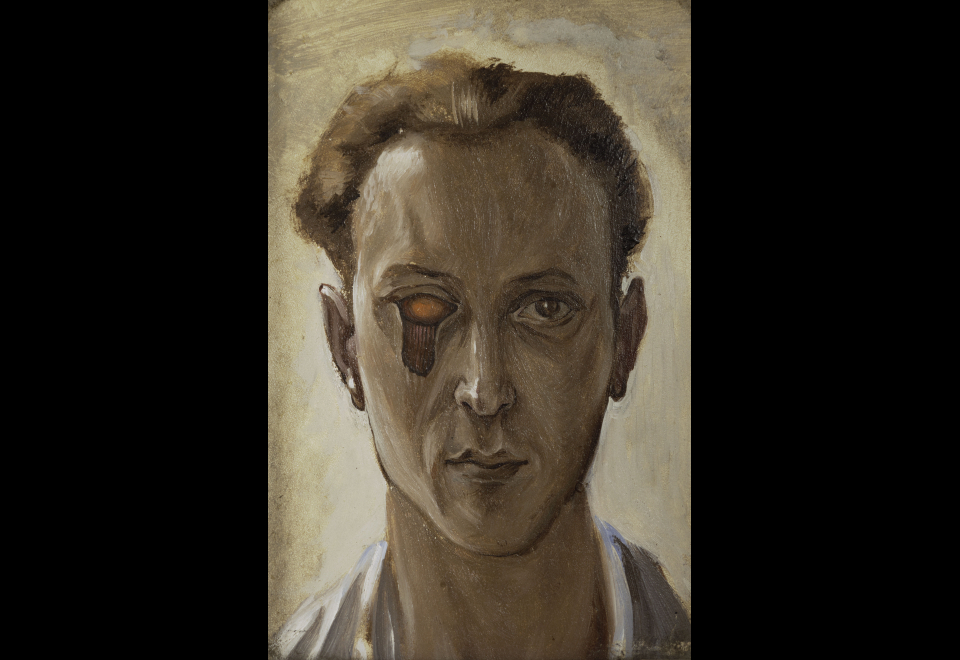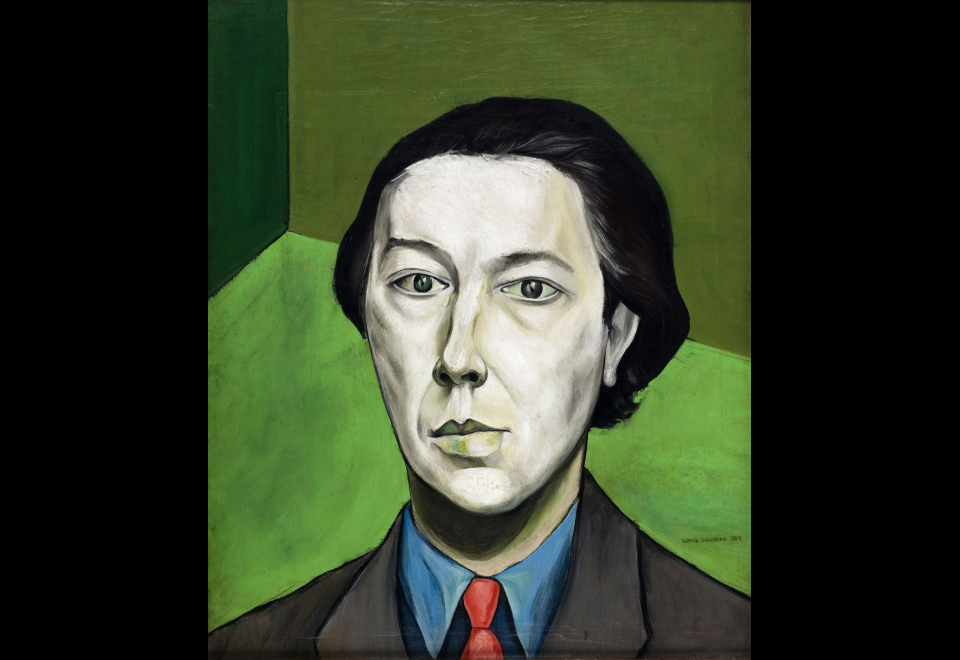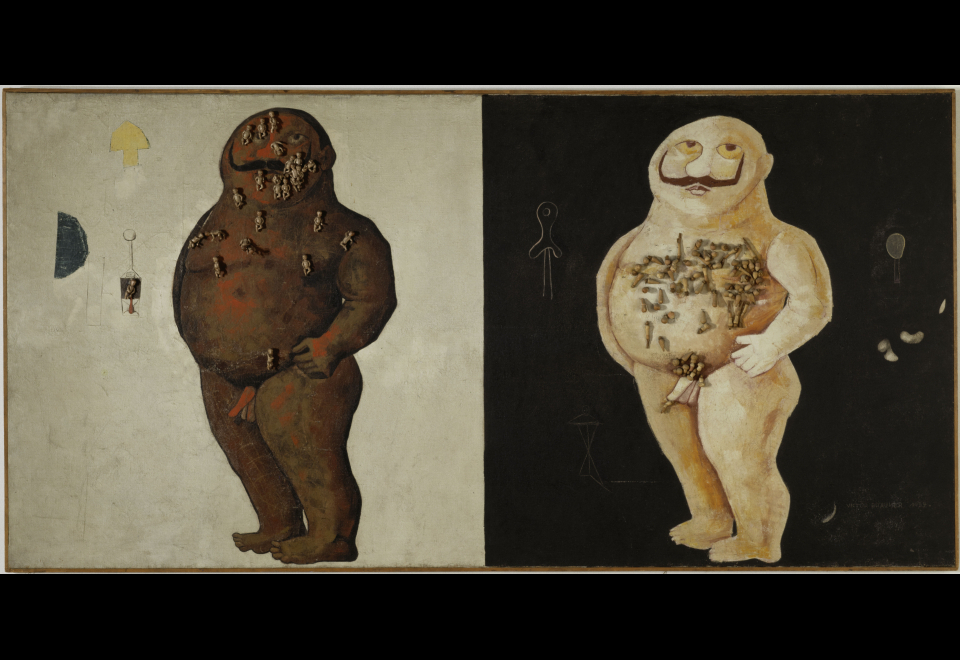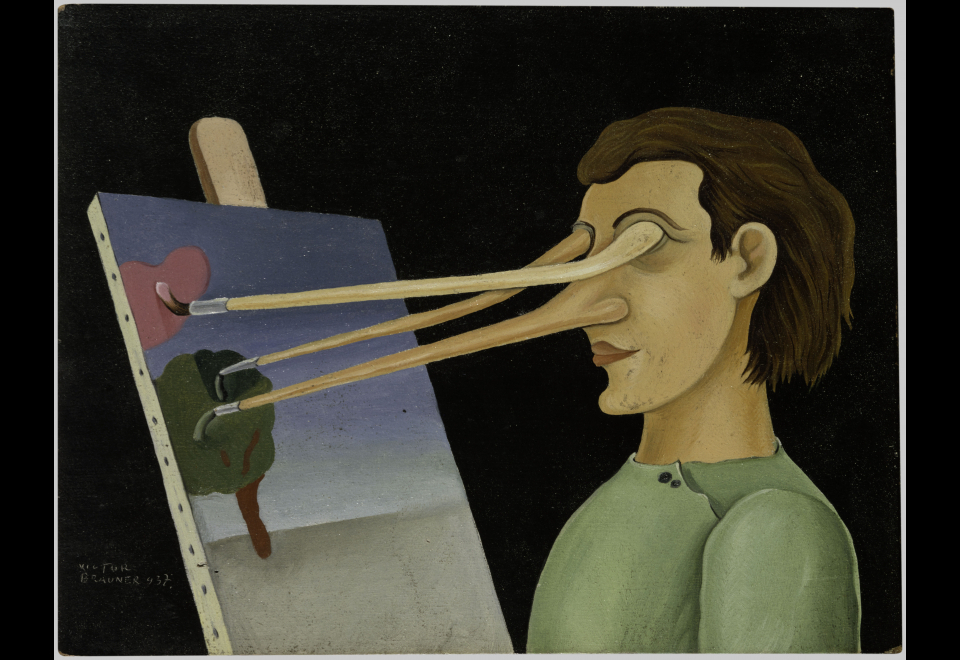Victor BraunerNew dates to be confirmed
From to
For its exhibition dedicated to that singular Surrealist Victor Brauner (1903–1966), the Musée d’Art Moderne de Paris is publishing a monograph containing over a hundred paintings and drawings, some of them on show for the first time since the last Paris retrospective, at the Musée National d’Art Moderne in 1972. The presentation sequence runs as follows: Beginnings in Romania (1920–1925); Paris and the shock of Surrealism (1925–1932); The Surrealist adventure (1933–1939); The «black frontiers» of the war (1939–1945); The Conglomeros (1941-1945); After the War (1946–1948); Beyond Surrealism (1949–1966).
Born in Romania, Victor Brauner knew at first hand the artistic ferment of 1920s Bucharest and the avant-gardes – Expressionism, Constructivism, Dada – whose radicalism so closely matched his independent spirit. From 1925 onwards regular stays in Paris, where he would settle definitively in 1938, saw his painting gradually shift towards Surrealism. By 1933 he had joined the movement and continued to take part in its activities until his exclusion by André Breton in 1948.
The loss of an eye in 1938 made his Self-portrait of seven years earlier a premonitory illustration of Surrealism’s theories and his painting a form of magic. Unable to migrate to the United States when war broke out, he had no choice – as a Jew, an undocumented foreigner and an opponent of all forms of fascist and totalitarian oppression – but to go underground in the South of France, where he sought to ward off constant danger via the esoteric doctrines of the tarot, alchemy, spiritism and the kabbala. In this dream world where reality no longer held sway, his work took on a mystery all its own. Paradoxically this time of fear and utter destitution was also one of great technical inventiveness, typified by his resort to wax and salvaged materials, and formal innovation.
The postwar period was marked by an exploratory succession of styles, attributable to his new-found liberty but powerless against the anguish and torment ambient events inspired in him. Other influences ranging from psychoanalysis to «primitive» thought made themselves felt in cycles – the Victors of his Onomatomania series, Les Rétractés («The Withdrawn»), Mythologies, Mothers’ Days – in which a newly invented language conveyed not reality but the invisible forces that drive the world.
The catalogue casts fresh light on Victor Brauner in contributions from writers and art historians including Georges Sebbag, Fabrice Flahutez, Radu Stern, Sophie Krebs, Camille Morando and Jeanne Brun.
The Musée d'Art Moderne de Paris is proud to announce that the catalog of the Victor Brauner exhibition " Je suis le rêve. Je suis l'inspiration" has received the special mention of the Prix CatalPa 2020, awarded by the association Les Arpenteurs d'Expositions.

Victor Brauner, Autoportrait, 1931
Huile sur toile
MNAM-CCI, Dist. RMN-Grand Palais / image Centre Pompidou, MNAM-CCI © Adagp, Paris 2020

Victor Brauner, Portrait d’André Breton, 1934
Huile sur toile
Musée d’Art Moderne de Paris
Crédit photographique : Paris Musées / Musée d’ Art Moderne de Paris © Adagp, Paris, 2020

Victor Brauner, Force de concentration de Monsieur K., 1934
Celluloïd, fil de fer, huile sur toile
Crédit photographique : Centre Pompidou, MNAM-CCI, Dist. RMN-Grand Palais / image Centre Pompidou, MNAM-CCI © Adagp, Paris, 2020

Victor Brauner, Sur le motif, 1937
Huile sur bois
Crédit photographique : Centre Pompidou, MNAM-CCI, Dist. RMN-Grand Palais / image Centre Pompidou, MNAM-CCI © Adagp, Paris, 2020

